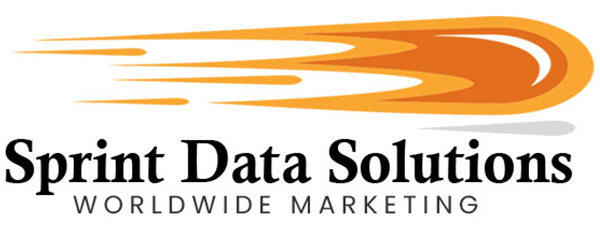Insurance Becomes More Important In Times Of Volatility
The concept of insurance exemplifies the saying: “It’s better to have it and not need it, than need it and not have it.” Life is unpredictable, and both individuals and businesses can encounter accidents or events with devastating financial consequences. In many such cases, the cost of recovery—from medical treatment and legal liabilities to property repair or replacement—can be overwhelming. Not everyone has the financial reserves to address these emergencies. Insurance serves as a safety net, providing financial protection and peace of mind in exchange for manageable, regular premium payments. When a covered incident occurs, those accumulated premiums return as a lifeline, covering expenses that might otherwise be financially crippling.
In fact, insurance is so vital to modern society that certain types are legally mandated. For instance, nearly every state in the U.S. requires drivers to carry at least a minimum level of auto insurance before they can legally operate a vehicle on public roads. Similarly, businesses may be required to carry liability insurance, and homeowners may need coverage to qualify for a mortgage. These mandates exist not just to protect the policyholder, but also to safeguard others who might be affected by their actions or assets.
Despite its importance, insurance is often perceived as a grudge purchase—something people know they should have, like eating their vegetables, but would rather not think about. Many individuals and even small business owners don’t delve into the specifics of what their policies actually cover or exclude. This gap in understanding can leave policyholders underinsured or vulnerable to unpleasant surprises when it’s time to file a claim.
This is where effective insurance marketing becomes essential. Clear, transparent communication that explains what policies offer—and what they don’t—can make a significant impact. Highlighting lesser-known benefits, revealing hidden clauses, or comparing plans side-by-side helps consumers make more informed decisions. A well-informed policyholder is not only more likely to see the value in maintaining coverage, but may also be more open to upgrading their policy or switching providers for better terms.
In essence, insurance isn’t just about preparing for the worst—it’s about empowering individuals and businesses to face the future with confidence, knowing they have a financial shield in place. Educating the public through thoughtful marketing and outreach is a key part of ensuring that this critical safety net is not only in place, but truly understood and appreciated.

Who Benefits?
There are numerous categories of insurance products available to serve the diverse needs of both individual consumers and commercial enterprises across the United States. Strategic opportunities to better target these markets include niche segments such as gig economy workers, high-growth small businesses, tech startups, remote professionals, and underserved rural populations. In addition, specialized insurance offerings — like cyber liability for digital businesses, environmental liability for manufacturers, or pet insurance for households — can address emerging demands and create competitive differentiation for insurers. By leveraging data analytics and behavioral insights, insurers can also personalize policies and delivery channels, enhancing customer engagement and retention in an increasingly competitive landscape.
Health Insurance
Among all the types of insurance Americans consider, health insurance remains one of the most crucial and emotionally charged. Despite the United States being a global leader in medical innovation, with cutting-edge treatments, advanced surgical procedures, and world-class healthcare facilities, the cost of accessing these benefits can be prohibitively high. Medical expenses are among the leading causes of personal bankruptcy in the U.S., and many citizens still face the grim reality that necessary, sometimes life-saving care may simply be unaffordable.
This issue is especially pronounced for the self-employed, part-time workers, gig economy participants, and those working for employers that do not offer comprehensive group health plans. Without employer-sponsored coverage or a substantial income to afford private insurance premiums, millions find themselves underinsured—or entirely uninsured—facing significant financial risk if serious illness or injury occurs.
The Affordable Care Act (ACA) aimed to bridge this gap, making health insurance more accessible through subsidies and insurance marketplaces. While it expanded coverage for many, the ACA has not fully resolved the systemic issues. Premiums and deductibles can still be high, provider networks limited, and many plans fail to meet the evolving healthcare needs of families and individuals.
This has created an urgent demand for better alternatives. Americans are actively exploring options such as health-sharing ministries, short-term health insurance, direct primary care models, and employer-funded health reimbursement arrangements (HRAs). Additionally, innovations in telemedicine and healthcare technology are paving new pathways for more affordable and convenient care.
As concern over healthcare costs continues to grow, individuals and families remain open to new solutions that offer both affordability and peace of mind. Anyone who can provide a realistic, practical alternative to traditional health insurance is likely to find a receptive audience, particularly at a time when financial resilience and personal well-being are more closely linked than ever.
Medicare Part B
As an essential counterpart to standard health insurance, Medicare Part B plays a crucial role in the financial planning of healthcare for millions of Americans—particularly seniors and individuals with chronic health conditions. While most attention in healthcare circles often goes to high-cost medical events—such as major surgeries, advanced cancer treatments like chemotherapy or radiation, and lengthy hospital stays—there is a wide array of ongoing, lower-profile medical expenses that can quietly accumulate into a significant financial burden.
Medicare Part B specifically addresses many of these vital but less-publicized needs. It covers routine doctor visits, outpatient care, preventive screenings, durable medical equipment (DME) such as walkers, wheelchairs, and blood glucose monitors, and even certain home health services. Additionally, Part B provides access to mental health services, including both outpatient counseling and psychiatric care, which are increasingly in demand due to growing awareness around mental health. Emergency medical transportation, such as ambulance services, is also included—an often overlooked yet critical benefit during unexpected health events.
Because these services touch nearly every aspect of a person’s ongoing health and wellness, concerns about Medicare Part B coverage can sometimes surpass those related to conventional insurance. Consumers are not just worried about catastrophic coverage—they want to ensure day-to-day care is affordable and accessible. For marketers and service providers, this opens a high-value opportunity: when Medicare Part B offerings are promoted with precision targeting—particularly toward aging demographics and those managing chronic conditions—they can generate strong consumer interest and engagement. As such, understanding and effectively communicating the benefits of Medicare Part B is essential for connecting with a health-conscious, cost-aware audience.
Life Insurance
While death is a natural part of life, its emotional and financial toll on surviving family and friends can be profound. This impact is especially significant when the deceased played a critical role as the primary income provider, helping to cover essential needs such as food, shelter, healthcare, and education—particularly in the case of dependent children or elderly parents. In response to this vulnerability, life insurance emerged as one of the earliest and most enduring forms of financial protection. Today, it remains a cornerstone of financial planning for millions of Americans.
However, life insurance products are not always straightforward. Many policies contain intricate terms, conditional clauses, exclusions, and optional “riders” that can limit or alter benefits—sometimes in ways that are not clearly understood by policyholders. These complexities can lead to disappointment or financial hardship at the worst possible time. This creates a meaningful opportunity for forward-thinking insurance providers to stand out by designing plans that are transparent, flexible, and genuinely supportive of policyholders’ needs. Offering competitive advantages—whether through streamlined terms, broader coverage, or fewer restrictive conditions—can make a critical difference in both customer satisfaction and long-term loyalty.
Variable Annuity Holders
Variable annuities, though not traditional insurance, are hybrid financial instruments often issued by insurance companies. They serve as a bridge between insurance and investment, typically requiring either a substantial one-time contribution or a structured series of smaller premium payments over time. In return, the insurer commits to providing future disbursements—either in a lump sum or through periodic payments—starting at a preselected date. These distributions are based on the tax-deferred accumulation of the invested funds, with earnings potentially varying depending on the performance of chosen subaccounts, which often include mutual-fund-like portfolios.
This dual nature—providing both investment growth potential and optional insurance features such as death benefits or income guarantees—makes variable annuities particularly attractive to individuals planning for retirement. They are especially popular among pre-retirees and retirees seeking a blend of market exposure and a measure of financial security. Due to the flexibility, potential for lifelong income, and favorable tax treatment, these products draw consistent interest from diverse demographic segments, including high-net-worth individuals, conservative investors seeking guaranteed income riders, and those looking to supplement their retirement strategies beyond IRAs or 401(k)s.
Auto Insurance
While auto insurance is legally required in most regions to operate a vehicle, not all policies offer the same level of coverage, benefits, or value. The market is saturated with a wide range of policy types—ranging from basic liability to comprehensive and collision coverage—each tailored for different needs, driving habits, and risk profiles. Major insurance providers often attract customers by offering discounts when policies are bundled with home or life insurance, but these bundled deals can sometimes result in customers unknowingly accepting suboptimal coverage. Many drivers remain unaware that more cost-effective or better-suited alternatives exist, often with enhanced customer service, clearer terms, or more favorable claim processes. This opens a valuable opportunity in the auto insurance market for providers to introduce competitive, transparent, and flexible products that genuinely align with consumer needs, fostering greater satisfaction and retention among policyholders who discover that better options were available all along.
Home Insurance
While home insurance isn’t mandated by law in the same way auto insurance is in most states, it often becomes a practical necessity rather than a legal one. This is because mortgage lenders typically require borrowers to have a valid homeowners insurance policy in place before approving and finalizing a home loan. In effect, for anyone who cannot afford to buy a home outright, home insurance becomes a prerequisite to ownership, serving as a form of financial protection not just for the homeowner, but for the lender’s investment as well.
Home insurance, like auto insurance, is a mature and competitive market with a wide variety of policy options—ranging from basic coverage to highly comprehensive plans that include personal liability, loss-of-use, and full replacement value protection. Despite the diversity of offerings, many homeowners end up with less-than-optimal coverage. This often occurs due to incentives like multi-policy discounts when bundling home and auto insurance with the same provider. These bundled deals can create the illusion of savings, even if the home policy doesn’t provide ideal coverage for the buyer’s specific needs.
However, for informed consumers, switching to a better policy can offer substantial benefits—including improved protection, more responsive claims processes, and even long-term savings. With the right guidance and a willingness to compare products beyond surface-level discounts, homeowners can make empowered choices that align with both their financial and personal risk management goals.
Renter Insurance
In recent years, insurance providers have recognized a significant shift in the housing landscape: it’s not just homeowners who need protection. A growing number of people, particularly in dense urban centers like New York City, are lifelong renters—many occupying rent-controlled or stabilized apartments. These tenants may never purchase property but still face the same risks from fire, theft, personal liability, or natural disasters. As such, the need for robust renters insurance has become more evident than ever.
This shift is driven in part by rising property prices, economic volatility, and lifestyle preferences, all contributing to a surge in long-term renting. With homeownership becoming less accessible for many, especially younger generations, the renter demographic has expanded dramatically. Insurance companies have responded by creating more tailored renters insurance policies that offer coverage not only for personal property, but also for loss of use, liability claims, and even identity theft in some cases.
To tap into this growing market, insurance providers must prioritize outreach, education, and clear communication. Many renters are still unaware of the affordability and benefits of renters insurance. Strategic marketing—paired with digital tools and platforms that make purchasing policies easier—can bridge this gap. Ultimately, providing peace of mind to tenants through comprehensive, affordable insurance coverage has become a crucial component of modern urban living.
Vault Insurance
Storing valuables and important possessions in a vault is often seen as the ultimate form of protection—an assurance of security against loss, damage, or theft. However, the reality is that no physical safeguard is completely immune to risk. Natural disasters such as floods, earthquakes, or fires, as well as sophisticated theft or system failures, can compromise even the most secure vaults. In such cases, the loss can be devastating—not only emotionally, but financially, especially after making a substantial investment in secure storage.
This is where vault insurance becomes an essential layer of protection. Designed specifically to cover the unexpected, vault insurance ensures that even if the worst occurs, the financial value of your stored items is safeguarded. For those who have already taken the step of securing a vault for peace of mind, the added reassurance of insurance is a logical and worthwhile extension. With the right messaging, clients can easily understand that peace of mind shouldn’t stop at the vault door—it should extend beyond it, with insurance as a smart, affordable safeguard for what matters most.
Commercial Business Insurance
One of the earliest forms of insurance in human history originated from commerce—specifically, safeguarding valuable cargo transported over long and often perilous trade routes. This foundational need to protect investments gave rise to marine insurance, a precursor to today’s broad spectrum of commercial business insurance. Over centuries, as trade and industry evolved, so too did the scope of business protection, adapting to the complexities of modern enterprise.
Today, commercial business insurance is one of the most comprehensive and vital components of risk management. It encompasses a wide range of policy types designed to shield companies from potential financial losses due to property damage, equipment breakdown, liability claims, employee injuries, cyber threats, and business interruption. No matter the size or sector—whether a local startup or a global enterprise—having the right insurance coverage is a crucial strategic asset.
Savvy business owners and executives understand that uncertainties in the commercial world are inevitable. From natural disasters and theft to legal disputes and technological disruptions, the risks are numerous. As a result, there is consistent demand across industries for well-structured commercial insurance policies that not only offer robust coverage but also deliver competitive pricing and responsive service. The companies that can strike this balance—coverage, cost, and credibility—are the ones that earn enduring trust in the marketplace.
Personal Property Insurance
Many people mistakenly believe that simply purchasing home insurance provides complete protection for all aspects of their home. In reality, especially in policies with very low premiums, the coverage often extends only to the physical structure of the property. This means that valuable personal belongings—such as electronics, furniture, jewelry, artwork, or sentimental items like family heirlooms—may receive limited or no coverage at all in the event of theft, fire, or other damage.
This is where personal property insurance plays a critical role. It offers an additional layer of protection specifically for the items inside the home, ensuring that residents don’t face major financial losses after a disaster. This type of insurance isn’t just beneficial for homeowners; renters can and should also consider it, especially since landlords’ policies typically do not cover tenant belongings.
In many cases, the cumulative value of a home’s contents can exceed that of the building itself—especially when factoring in specialized equipment, rare items, or essential household technology. For individuals who prioritize the safety and replacement of their possessions, marketing personal property insurance is both a practical and emotional appeal. It’s a proactive solution for those who understand that protecting a house isn’t enough if everything inside is left vulnerable.

Insurance Bond
An insurance bond, while not identical to a traditional insurance policy, plays a similar role in offering financial security and risk mitigation. Fundamentally, a bond acts as a legal and financial guarantee that a party—whether an individual, business, or contractor—will meet specific obligations or compensate for failure to do so. This assurance is particularly valuable in high-stakes environments where trust and accountability are critical.
There are numerous types of bonds tailored to various industries and operational needs. For instance, fidelity bonds protect businesses against losses caused by employee dishonesty, such as theft or fraud. Surety bonds—including bid bonds, performance bonds, and payment bonds—are commonly used in the construction and contracting sectors to assure clients that a project will be completed on time, within budget, and according to specifications. These bonds not only safeguard the financial interests of project owners but also enhance the credibility and competitiveness of the bonded business.
Given the wide array of bond types and their crucial function in maintaining trust and compliance across industries, there is a continual demand for bonding services. Small business owners, contractors, and service providers may require bonds to bid on contracts, adhere to licensing requirements, or reassure clients of their reliability. This ongoing need makes marketing insurance bonds a strategic and high-potential endeavor, especially when targeting sectors where regulatory or contractual obligations necessitate bonding.
Business Interruption Insurance
When a home is damaged by a disaster, residents may be temporarily displaced, but their ability to earn an income often remains unaffected. However, when a business location is impacted, the consequences can be far more serious—resulting in an immediate halt to operations, loss of revenue, and potential financial hardship for both owners and employees. Business interruption insurance offers a crucial safety net in such scenarios, ensuring that businesses can recover and continue operating despite physical setbacks.
This type of insurance is designed to go beyond basic property coverage. It compensates for lost income during downtime, covers ongoing expenses such as rent and loan obligations, and often includes employee payroll protection to retain staff through the recovery period. In many cases, it also helps fund temporary workspaces and even aids in reestablishing supply chains or customer communications. Just like any insurance policy, the effectiveness of business interruption coverage depends on tailoring it to the specific needs and risk exposures of a business. With the right features in place, it can mean the difference between a temporary setback and permanent closure.
Fire Insurance
Fire insurance remains one of the most recognized and essential forms of property protection, widely valued for its role in safeguarding assets against one of the most destructive hazards. A fire can engulf a structure in minutes, causing irreparable damage and significant financial loss. This stark reality is why many individuals and businesses invest in fire insurance—not just for legal compliance or asset protection, but for the peace of mind that comes with knowing that a fire-related disaster won’t spell financial ruin.
However, not all fire insurance policies are created equal. Coverage terms can differ dramatically across providers, with some offering only basic structural damage reimbursement while others extend to contents, temporary relocation costs, and even loss of income. These variations make it crucial for policyholders to scrutinize what is actually covered and to compare providers carefully. For insurance companies that offer more comprehensive plans or competitive rates, there is substantial opportunity to appeal to consumers seeking enhanced security. In a marketplace where needs and expectations evolve, providers that go beyond the standard offerings often find themselves well-positioned to negotiate and retain loyal customers.
High-Risk Insurance
While standard insurance policies are designed for the average low-risk consumer, not everyone fits into this mold. That’s where non-standard or “high-risk” insurance policies come into play. These plans are tailored for individuals and businesses who fall outside traditional underwriting criteria—such as drivers with multiple traffic violations or lapses in premium payments, and property investors who own vacant or unoccupied buildings. Despite their higher risk profiles, these clients still seek the financial security and reassurance that insurance coverage offers. This niche segment may be smaller, but it’s dynamic and growing, with real potential for providers who understand how to connect with and serve these underserved markets.

How We Can Help
Sprint Data Solutions Worldwide Marketing is a 100% American-owned and operated enterprise proudly founded by a disabled veteran. Since our inception as a specialized direct mail marketing company, we’ve grown into a full-service marketing solutions provider, offering domestic, continental U.S., and international outreach capabilities. With a strong foundation in data-driven strategy and deep market insights, we empower businesses to reach their ideal audiences more effectively.
We specialize in delivering high-quality insurance consumer and business lists tailored to meet your specific campaign objectives. Whether you’re targeting by geographic region, income bracket, age, business type, or behavioral attributes, our lists are curated with precision and relevance. Our data is sourced from verified, reputable platforms and enhanced through advanced AI-powered analytics and machine learning models, ensuring accuracy, freshness, and strategic value.
Our pricing remains competitive without compromising on quality, and our commitment to frequent database updates means you always work with the most current and responsive contacts. Whether you’re marketing through direct mail, telemarketing, email, SMS/text messaging, or omni-channel strategies, we provide the data intelligence and segmentation tools to increase your ROI and customer acquisition success.
Partner with Sprint Data Solutions to tap into expertly segmented lists, responsive audiences, and marketing tools that drive results. Reach out today to find out how we can help you connect with more insurance customers—smarter, faster, and more efficiently.






